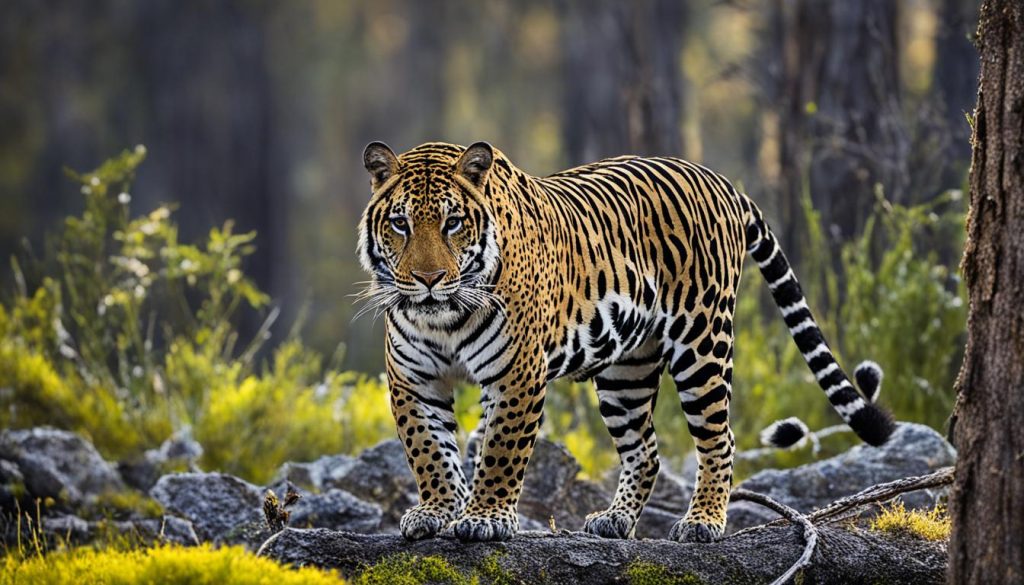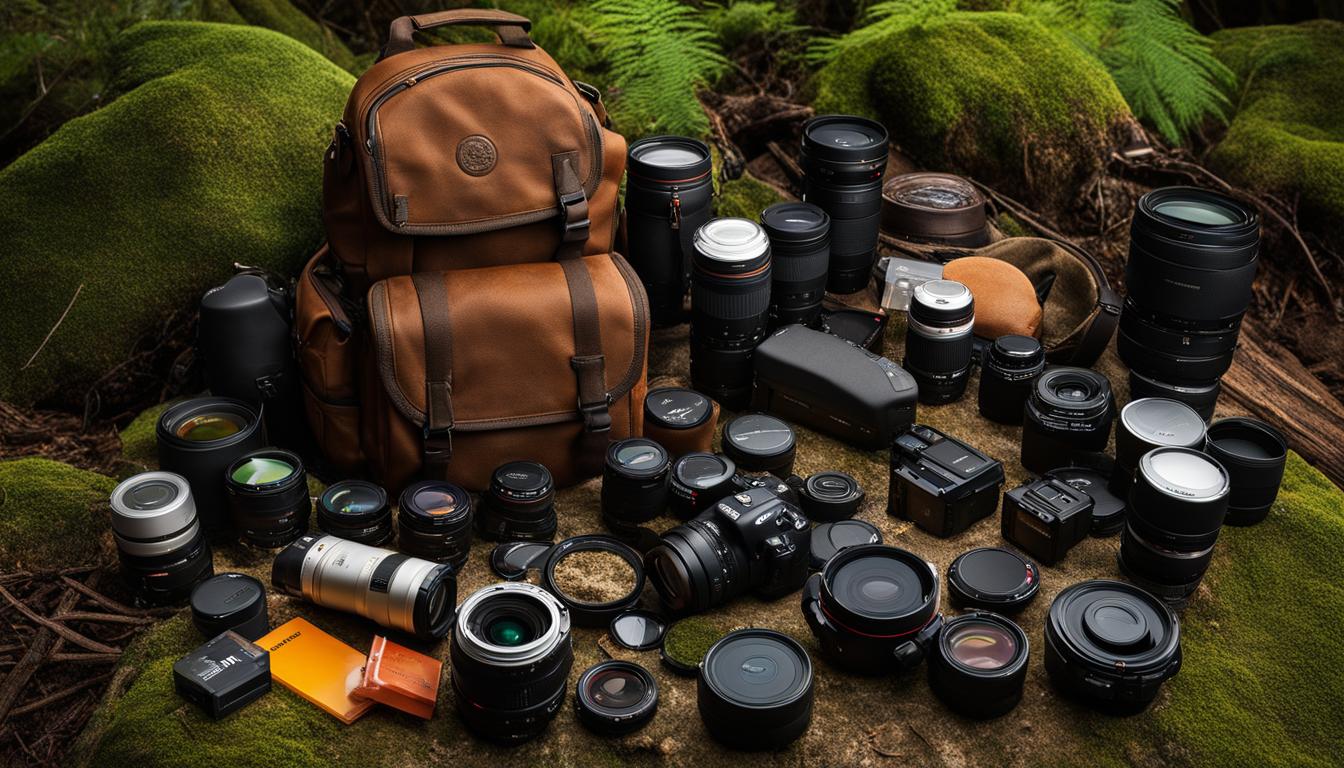Are you ready to explore your passion for wildlife photography? Capturing the beauty and grace of nature’s creatures requires skill, patience, and the right equipment. To help you get started, we have compiled an essential wildlife photography checklist and guide that covers everything you need to know to create stunning images of animals in their natural habitat.
Key Takeaways:
- Prepare a wildlife photography gear checklist to carry all the necessary equipment to the terrain.
- Before choosing camera and lenses consider zoom range, autofocus system, speed and capacity of camera, rugged and weather-resistant
- Study animal behavior before photographing them to anticipate the right moment for a captivating shot.
- Master lighting techniques, including natural and additional lighting, to enhance your wildlife shots.
- Compose and frame your shots carefully, paying close attention to the background and surroundings, to add depth to your images.
Choosing the Right Camera and Lenses
Wildlife photography is captivating, but capturing the best shots depends largely on the equipment you use. When it comes to cameras, a DSLR or mirrorless camera with fast autofocus is preferred. Both have their advantages, so choose one that best suits your needs.
As for lenses, a telephoto lens is essential for capturing wildlife from a distance. For smaller animals and birds, a lens with at least 300mm focal length is recommended. The wider aperture, the better since wildlife photography is often done during the low-light hours.
Consider investing in high-quality lenses over camera bodies. Good lenses retain their value longer and can be used for years to come.
Factors to Consider When Choosing Camera and Lenses
- Quality of the Image Sensor
- Autofocus Speed and Accuracy
- Frame-per-Second Capabilities
- Low Light Capabilities
- Stabilization Technology
Take the time to research the best cameras and lenses for wildlife photography. While it can be tempting to opt for the latest and greatest camera, sometimes older models can provide excellent results at a more affordable price.
Don’t forget to consider other essential accessories that can improve your experience, such as a sturdy tripod, camera bag, and memory cards.
Ultimately, your choice of camera and lenses should depend on your budget, shooting style, and subjects of interest.
“Investing in high-quality lenses over camera bodies is a smart decision for any wildlife photographer. Good lenses retain their value longer, making them a worthwhile investment for years to come.”
Understanding Animal Behavior
Wildlife photography is as much about capturing untamed subjects in motion as it is about understanding their behavior. Studying animal behavior is essential, and here’s why.
Animals have their way of communicating, and it often goes beyond the spoken language. By observing them keenly, you can interpret the signs they give, predict their actions and anticipate moments worth capturing. This includes watching their body language, eye movements, the sounds they make, the smells they emit, and the environment in which they thrive.
The more you understand the animals’ behavior, the more you’ll be able to predict and capture their unique traits in motion. You can apply this knowledge to adjust your camera settings, including focus, shutter speed, and aperture, to capture the perfect shot.
“The wildlife photographer’s job is to capture the animal’s unique expression or character while it’s in its natural environment, and that sometimes means waiting, sometimes means trekking or going to places where there are risks involved.” – Frans Lanting
The best way to study and understand animal behavior is to spend time in their natural habitat and observe them from a distance. Use binoculars or telephoto lenses to study the way they interact with their surroundings and other creatures around them. By being patient and respectful while photographing animals, you minimize the chances of disturbing their habitat, thus enabling you to get closer and capture memorable shots safely.
Mastering Lighting Techniques
Lighting plays a significant role in wildlife photography. Without proper lighting, even the most fascinating creatures in their natural habitat may appear dull in your images. Therefore, it is essential to master lighting techniques for wildlife photography.
Working with Natural Light
One of the most effective ways to capture stunning wildlife photos is by utilizing natural light. As the sun rises or sets, the colors and the shadows created by natural light can add a unique mood to your photos. When photographing in natural light, you should always aim to shoot during the Golden Hour for the best possible results.
Pro Tip: Avoid shooting when the light is too harsh, such as midday, as it can create harsh shadows and overexposure.
Additional Lighting Equipment
Supplemental lighting equipment can help bring out certain aspects of your photos that are not possible with natural lighting. For instance, it can help to reduce harsh shadows and enhance colors. However, it’s essential to balance the supplementary lighting with the natural light to avoid making your photos look artificial.
Use these practical lighting techniques and you’ll be on your way to producing magical wildlife photographs!
Composition and Framing
Composition and framing are crucial in wildlife photography as they can make your images truly captivating. The goal is to create balance and harmony within the frame, drawing the viewer’s eye to the intended subject. The key to successful composition is to experiment with different techniques until you find what works best for you.
Rule of Thirds
The “Rule of Thirds” is a basic but effective technique that involves dividing the frame into three parts, both horizontally and vertically. The four points where the lines intersect are where the subject should ideally be placed to create a more balanced and dynamic composition.

Leading Lines
Leading lines are a powerful compositional tool that can help direct the viewer’s gaze towards the subject. These lines can be anything from a path, a branch, or even the curve of an animal’s body. Using leading lines can help create a sense of depth and perspective in your images.
Framing
Framing is the process of using elements within the scene to enclose the subject, creating a more focused and intimate composition. For example, photographing an animal through a natural frame of leaves or branches can add depth to your image and help draw the viewer’s attention to the subject.
Remember to experiment with different techniques, be patient and practice, and you will soon be creating stunning wildlife images that hold the viewer’s attention.
Tips for Getting Close to Wildlife
Approaching wildlife can be a challenging yet rewarding experience for wildlife photographers. By carefully following these tips and techniques, you can capture stunning shots of animals in their natural habitat while maintaining a respectful distance:
1. Research Your Subject
Before heading out to take photos of a particular animal, do your research. Learn about their habits, habitats, and behaviors. This will help you anticipate their movements and the best moments to capture your shots.
2. Be Patient
Wildlife photography requires a lot of patience. Wait for the animals to come to you, rather than chasing after them. You may need to spend several hours or even days in one spot to get the perfect shot.
3. Use a Telephoto Lens
One of the best ways to get close to wildlife is to use a telephoto lens. These lenses allow you to zoom in on your subject without getting too close. Make sure to choose a lens with a long focal length to get the best results.
4. Stay Still and Quiet
When you’re close to the animal you want to photograph, it’s important to stay still and quiet. Sudden movements or loud noises can startle the animal and cause them to flee. This is why it’s essential to maintain a respectful distance and work with the natural behavior of the animal.
Remember, the goal of wildlife photography is not to disturb or interfere with the animals and their habitats, but to capture beautiful and natural shots of them in their element.
Conclusion
As you venture out into the wild to capture stunning shots of nature’s wonders, remember that proper preparation and knowledge are key. With the information provided in this Essential Wildlife Photography Checklist Guide, you are now equipped to choose the right camera and lenses, understand animal behavior, master lighting techniques, perfect your composition and framing, and approach wildlife respectfully.
Always prioritize the safety of yourself, the animals, and their environment, and never compromise their well-being for the sake of a photograph. With these tips and techniques, you are on your way to creating unforgettable images that showcase the beauty and splendor of wildlife in their natural habitat. Happy shooting!






